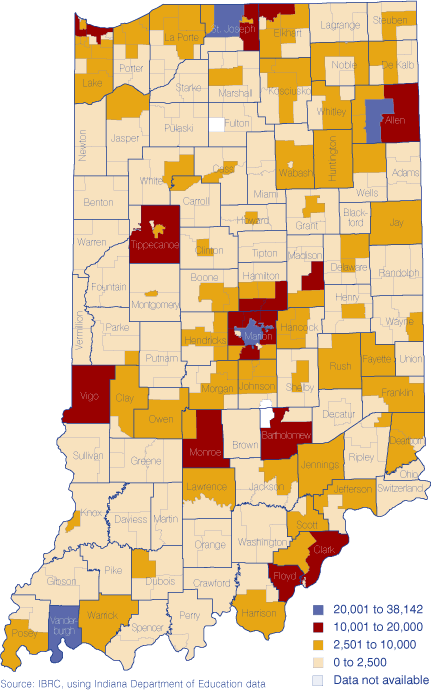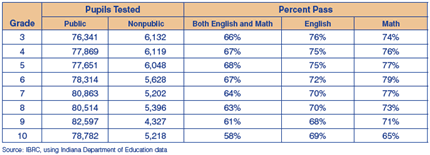Hoosier Students and the Public Schools
Be sure to check out the new statewide interactive school district map.
More than 1.1 million Hoosier children are preparing to return to school this month, along with nearly 60,500 teachers and 3,300 administrators. The following is a bird's eye view of Indiana's public school corporations.
Enrollment
A little over 1 million Hoosier children attended public school during the 2005–06 school year (see Figure 1). Among school corporations, Indianapolis Public Schools had the highest enrollment (38,142), while Dewey Township Schools in La Porte County had a mere 154 pupils (see Figure 2).
Figure 1: Indiana Enrollment, 2005-06
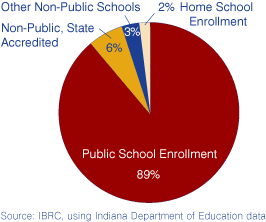
Figure 2: Enrollment by School District, 2005–06
Within the past 10 years, public school enrollment has increased by 5 percent in Indiana. Meanwhile—though accounting for only 2 percent of children statewide—the number of children home-schooled has skyrocketed 332 percent to total almost 23,500 children. Since 2001, however, the annual rate of growth in home schooling has begun to slow down, dropping to a 5 percent increase in 2004–05 from the previous year (compared to a 1 percent over-the-year increase in public school enrollment).
The Indiana Department of Education (IDOE) projects that within the next 10 years, public school enrollment will increase from current levels by about 4 percent—that's more than 43,500 new children. (Projections for those home-schooled, as well as those enrolled in private schools, were unavailable.)
Teachers
The student-teacher ratio during the 2004–05 school year ranged from eight students per teacher in Dewey Township Schools to 24 students per teacher in Lake County's Tri-Creek School Corporation (see Figure 3). Statewide, the average teacher salary equaled $46,591 (see Figure 4). In Morgan County, Eminence Community School teachers had the lowest average salary in the state at $32,579 (incidentally, they also had the youngest average teacher age of 36 years—see Figure 5). West Lafayette Community School Corporation, on the other hand, had an average teacher salary of $57,473 (and an average teacher age of 47). Gary Community Schools had the oldest average teacher age statewide at 51 years (and an average teacher salary of $51,405).
Figure 3: Students per Teacher, 04-05
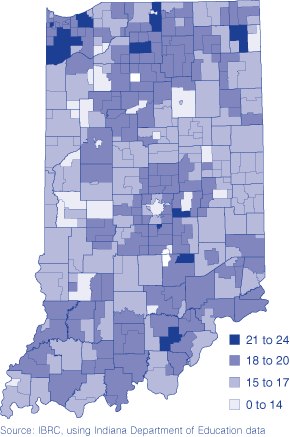
Figure 4: Average Teacher Salary, 04-05
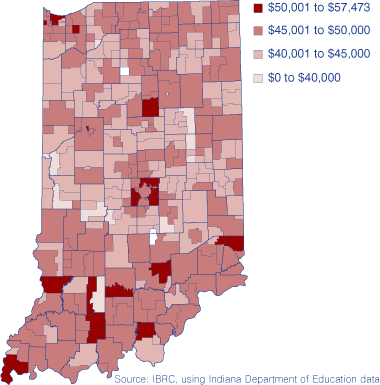
Figure 5: Average Teacher Age, 04-05
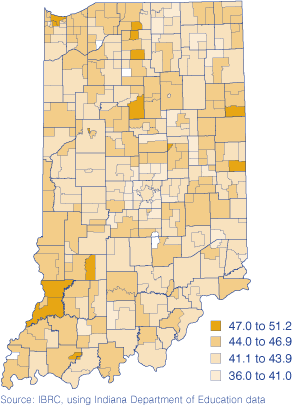
A $6 Billion Endeavor
During the 2004–05 school year, school corporations spent $6.06 billion, according to IDOE's annual report, for all general fund purposes. However, that $6 billion averaged out to just $6,160 per student.
Total per pupil expenses, on the other hand, include capitol outlays not paid out of the general fund and are averaged across three years to help smooth out spikes resulting from building projects and the like. From 2002 to 2004, the Indiana average was $9,115 per pupil.
Achievement
Quantifying student achievement is fraught with difficulty, and standardized tests—for better or worse—are often the proxy used. Table 1 shows the statewide scores for 2005–06. Whereas 68 percent of fifth graders passed both English and math, that dropped to just 58 percent of high school sophomores. The number passing the math portion showed a similar pattern—peaking in the sixth grade at 79 percent and falling to 65 percent of sophomores. English scores peaked at 76 percent of third graders, falling to a low of 69 percent of 10th graders. Figure 6 shows the percentage of students in each school corporation passing both English and math.
Table 1: Standardized Test Scores by Grade, 2005–06
Figure 6: Percent of Students Passing Both English and Math ISTEP Requirements by School District, 2004–05
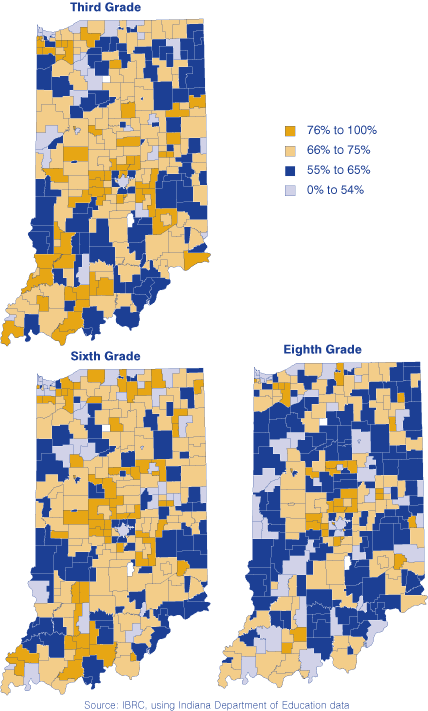
Find more school district or statewide education data at
http://compass.doe.in.gov/dashboard/overview.aspx.
STATS
Indiana provides county-level aggregations
of education data based on the IDOE reports. It also provides regional
school district boundary maps at
www.stats.indiana.edu/maptools/school_districts.htm.
Sidebar: No Child Left Behind
With the 2001 passage of the No Child Left Behind Act, schools must show annual yearly progress (AYP) in their total student population, as well as in student subgroups (which involve race, economic background, special education and English proficiency). To achieve AYP, school districts must meet the criteria in ALL applicable student groups; thus, larger and more diverse districts find it harder to make AYP.
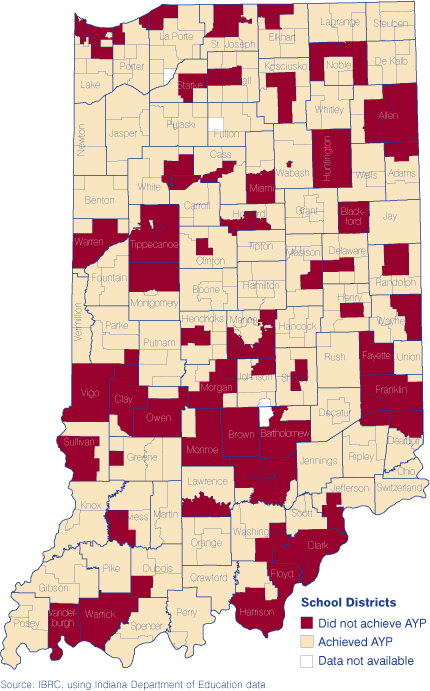
In 2005, 213 out of 293 school districts (73 percent) made AYP. The “bar” was raised from prior years: 65.7 percent of students had to pass the English portion and 64.3 percent had to pass the math portion of the ISTEP in order to make AYP. Alternatively, a district could make AYP if it reduced the number of students not meeting these targets by 10 percent.
For more information and detailed school AYP breakdowns, visit Indiana's No Child Left Behind website at www.doe.in.gov/improvement/accountability.
Rachel Justis, Managing Editor
Indiana Business Research Center, Kelley
School of Business, Indiana University

